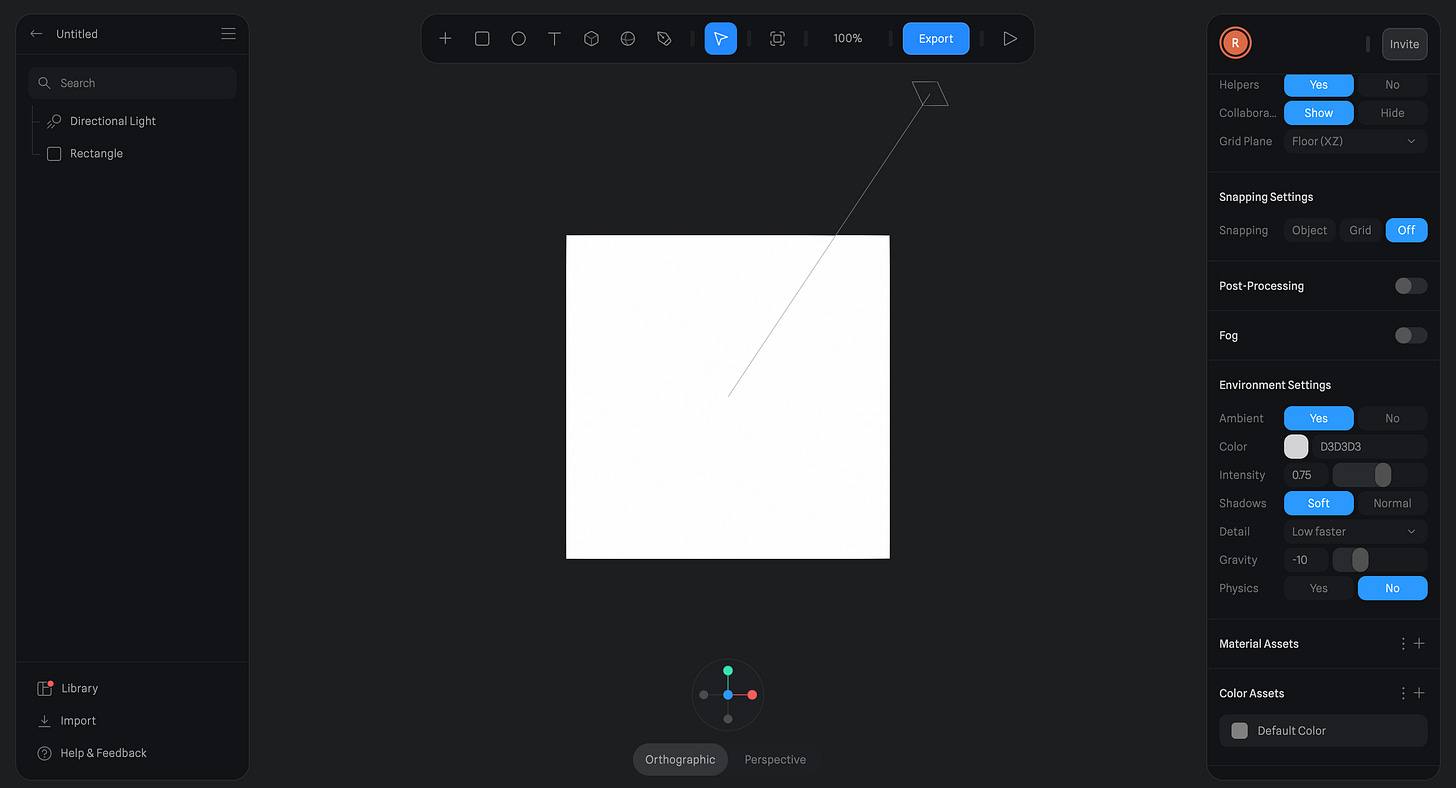Spline – a 3D modeling/design tool
#Design #Seed
Quick Overview:
Founder: Alejandro León (spent 10+ years as a professional designer and developer)
Latest Funding: $16M Seed (led by NXTP Ventures, with participation from Chapter One Ventures and Y Combinator in April 2021)
Post-Money: $46M
Website: https://spline.design/
Founded: 2020; Location: Chile/Remote; # of employees: 36
TLDR – Investment Verdict:
Spline is a unique 3D design tool, and in terms of usability and workflow, it feels smoother and more user-friendly than existing solutions like Blender. Their real-time collaboration and browser editor are strong value propositions, but the key differentiator lies in their focus on interactive objects and their UI/UX. While there are many 3D modeling solutions that are extremely sophisticated on the market, Spline isn’t just about 3D modeling – it’s also about building interactive objects that significantly improve a product or the design of a website. That’s something current tools like Blender don’t offer.
Thus, whether your an experienced designer or just someone looking for a nice 3D animation, Spline is a great tool and is definitely a software worth learning and using. Their development speed has been great and their UI/UX is far superior to anything else on the market, making it a no-brainer for designers. Yet, from an investment perspective, Spline’s tool currently feels like more of a nice-to-have than a need-to-have. Though it works very well for 3D modeling and sculpting, one of its most compelling features (interactive objects/scenes that can be integrated into websites) seems like an add-on to a website, versus a critical, revenue-driving feature. Hence, the main concern is regarding mission criticality – how integral is a tool like Spline to a designers suite? Would a user’s website/product be significantly worse off if Spline didn’t exist? These questions could all be answered by data. What is the frequency of use from users? What is the breakdown of users between teams/individual? What is user retention? If users interactions with Spline are high frequency, Spline looks like a very strong bet in the 3D design space given their strong UI/UX, focus on interaction, and quick development speed.
Analysis:
The Problem:
3D design is traditionally complex and, unlike other forms of design, it requires a mastery of a suite of software tools as well as a basic understanding of physics. Current software such as Maya, Modo, Blender, Houdini, and Carara are popular and offer an extensive collection that includes every step of the 3D workflow. Yet, these softwares have a steep learning curve, aren’t always collaborative, and don’t effectively serve designers looking to quickly implement 3D components into websites and products. These obstacles led to 3D design being inaccessible for most designers.
About Spline:
Spline is a 3D design platform that utilizes a 2D approach to building 3D web-based designs. The platform enables collaboration so designers can work together in real-time and the 3D/2D content is compatible for production environments. Spline offers both a browser editor and a desktop app, and both function well in terms of real-time collaboration. The software is great for creating interactive objects and animations that could be integrated into websites. Some of my favorite examples of websites that utilize Spline are a remake of Curology’s website, Flow, and the Bosoka Company.
Spline’s UI is a level above anything else on the market. As someone who has minimal 3D design experience, learning how to use the core functionality Spline only took a few hours and made intuitive sense. The animations are extremely clean and the customizability is great. Users can export their Spline in a variety of different formats, such as code, videos, 3D formats, and even iOS AR.
Investment Analysis
For a designer wanting to implement 3D design into their product/website, Spline is a no-brainer. The UI is much more designer-friendly and the learning curve is quick, compared to extremely sophisticated 3D modeling tools like Blender that feel overwhelming. Yet, Spline still feels early – it solves a particular problem (creating interactive objects for websites) incredibly well, but it feels significantly inferior to tools like Blender in terms of pure 3D modeling (such as modeling a mini-car to 3D print). If Spline is able to not only be a fantastic tool for creating interactive models, but for also for pure 3D modeling and printing, it could be a category defining product. The task is an ambitious one, but Spline is growing at a strong rate and has recently made steps in the right direction, such as their new 3D Printing and CAD Format export option. Additionally, their new components feature makes Spline a more robust design choice for designers working on longer-term projects.
The real question here lies on the criticality of the product – a tool that is used to create 3D animations and interactive objects feels like a nice-to-have and not a need-to-have, versus a 3D modeling tool that is sophisticated enough for teams to use and complete a 3D model export for products. Spline has already made developments with 3D model exports and if they create a product that has similar capabilities to current modeling tools like Blender while maintaining their easy-to-use UI/UX, Spline is fantastically positioned to grow further.



